Medina
Medina
History[edit]
Etymology[edit]
Yathrib[edit]
Taybah and Tabah[edit]
Madinah[edit]
Early history and Jewish control[edit]
Under the 'Aws and Khazraj[edit]
Under Muhammad and the Rashidun[edit]
Battle of Uhud[edit]
Battle of the Trench[edit]
Under subsequent Islamic regimes[edit]
Umayyad Caliphate[edit]
Abbasid Caliphate[edit]
Mamluk Sultanate of Cairo[edit]
Ottoman rule[edit]
First Ottoman period[edit]
First Saudi insurgency[edit]
Muhammad Ali Pasha's era[edit]
Second Ottoman period[edit]
Modern history[edit]
Sharifate of Mecca and Saudi conquest[edit]
Under the Kingdom of Saudi Arabia[edit]
Destruction of heritage[edit]
Geography[edit]
Elevation[edit]
Topography[edit]
Climate[edit]
Significance in Islam[edit]
The Prophet's Mosque (al-Masjid an-Nabawi)[edit]
Quba'a Mosque[edit]
Other sites[edit]
Masjid al-Qiblatayn[edit]
Masjid al-Fath and the Seven Mosques[edit]
Al-Baqi' Cemetery[edit]
In Islamic eschatology[edit]
End of civilization[edit]
Sufyan ibn Abu Zuhair said Muhammad said:[43]
Protection from plague and ad-Dajjal (the False Messiah)[edit]
With regards to Medina's protection from plague and ad-Dajjal, the following ahadith were recorded:
Demographics[edit]
Religion[edit]
Culture[edit]
Museums and arts[edit]
Economy[edit]
Human resources[edit]
Education and scholarly activity[edit]
Primary and secondary education[edit]
Higher education and research[edit]
Transport[edit]
Air[edit]
Roads[edit]
Bus and rapid transit[edit]
Rail[edit]
Further reading[edit]
- Mubarakpuri, Safiur Rahman (2011). The Sealed Nectar: Biography of the Noble Prophet ﷺ. Riyadh: Darussalam Publishers. ISBN 978-603-50011-0-6
- Mubarakpuri, Safiur Rahman (2004). The History of Madinah Munawwarah. Riyadh: Darussalam Publishers. ISBN 978-996-08921-1-5
- Badr, Abdulbasit A. (2013). Madinah, The Enlightened City: History and Landmarks. Medina: Al-Madinah Al Munawwarah Research & Studies Center. ISBN 978-603-90414-7-4
See also[edit]
References[edit]
- ^ "Fahad Al-Belaihshi Appointed Mayor of Madinah by a Royal Decree (Arabic)". Sabq Online Newspaper. Retrieved 29 December 2020.
- ^ "Medina Population (2020)". worldpopulationreview.com. Retrieved 24 June 2020.
- ^ "Population of Cities in Saudi Arabia (2020)". worldpopulationreview.com. Retrieved 24 June 2020.
- ^ Lammens, H. (2013). Islam: Beliefs and Institutions. Routledge. p. 5. ISBN 9781136994302.
- ^ a b c d e f g h i j k l m n o p q r s t u v w x y Badr, Abdulbasit A. (2015). Madinah, The Enlightened City: History and Landmarks. Madinah. ISBN 9786039041474.
- ^ a b "Archived copy". www.al-madinah.org. Archived from the original on 5 March 2016. Retrieved 24 June 2020.
- ^ Historical value of the Qur'ân and the Ḥadith A.M. Khan
- ^ What Everyone Should Know About the Qur'an Ahmed Al-Laithy
- ^ a b Howden, Daniel (6 August 2005). "The destruction of Mecca: Saudi hardliners are wiping out their own heritage". The Independent. Retrieved 17 January 2011.
- ^ "Tarikh Ibn Khaldun".
- ^ "Al-Madeenah Al-Munawwarah".
- ^ C. J. Gadd (1958). "The Harran Inscriptions of Nabonidus". Anatolian Studies. 8: 59. doi:10.2307/3642415. JSTOR 3642415. S2CID 162791503.
- ^ "A Pre-Islamic Nabataean Inscription Mentioning The Place Yathrib". Islamic Awareness.
- ^ a b c <>. Ibn Ḥanbal, ʻAbd Allāh ibn Aḥmad, 828–903. 'Amman: Bayt al-Afkar al-Dawliyah. 2003. ISBN 9957-21-049-1. OCLC 957317429.
- ^ Muslim ibn al-Ḥajjāj al-Qushayrī, approximately 821–875. (26 November 2019). Ṣaḥīḥ Muslim : with the full commentary by Imam al-Nawawi. Nawawī, ‡d 1233–1277.,, Salahi, Adil. London. ISBN 978-0-86037-786-3. OCLC 1134530211.
- ^ a b Ibn Ḥajar al-ʻAsqalānī, Aḥmad ibn ʻAlī, 1372-1449.; ابن حجر العسقلاني، أحمد بن علي،, 1372–1449. (2017). Fatḥ al-Bārī : victory of the Creator. Williams, Khalid,, Waley, M. I. [U.K.] ISBN 978-1-909460-11-9. OCLC 981125883.
- ^ a b c Jewish Encyclopedia Medina
- ^ Peters 193
- ^ a b c d "Al-Medina." Encyclopaedia of Islam
- ^ for date see "J. Q. R." vii. 175, note
- ^ See e.g., Peters 193; "Qurayza", Encyclopaedia Judaica
- ^ Muslim sources usually referred to Himyar kings by the dynastic title of "Tubba'".
- ^ Guillaume 7–9, Peters 49–50
- ^ Subhani, The Message: The Events of the First Year of Migration Archived 24 May 2012 at the Wayback Machine
- ^ For alliances, see Guillaume 253
- ^ Firestone 118. For opinions disputing the early date of the Constitution of Medina, see e.g., Peters 116; "Muhammad", "Encyclopaedia of Islam"; "Kurayza, Banu", "Encyclopaedia of Islam".
- ^ Shelomo Dov Goitein, The Yemenites – History, Communal Organization, Spiritual Life (Selected Studies), editor: Menahem Ben-Sasson, Jerusalem 1983, pp. 288–299. ISBN 965-235-011-7
- ^ "Jameh Syed al-Shohada Mosque". Madain Project. Archived from the original on 6 May 2020. Retrieved 6 May 2020.
- ^ Esposito, John L. "Islam." Worldmark Encyclopedia of Religious Practices, edited by Thomas Riggs, vol. 1: Religions and Denominations, Gale, 2006, pp. 349–379.
- ^ a b Robert Mantran, L'expansion musulmane Presses Universitaires de France 1995, p. 86.
- ^ "The Jews of Arabia". dangoor.com.
- ^ "Harrat Rahat". Global Volcanism Program. Smithsonian Institution.
- ^ Bosworth,C. Edmund: Historic Cities of the Islamic World, p. 385 – "Half-a-century later, in 654/1256, Medina was threatened by a volcanic eruption. After a series of earthquakes, a stream of lava appeared, but fortunately flowed to the east of the town and then northwards."
- ^ Somel, Selcuk Aksin (13 February 2003). Historical Dictionary of the Ottoman Empire. Scarecrow Press. ISBN 9780810866065 – via Google Books.
- ^ Peters, Francis (1994). Mecca: A Literary History of the Muslim Holy Land. PP376-377. Princeton University Press. ISBN 0-691-03267-X
- ^ Mohmed Reda Bhacker (1992). Trade and Empire in Muscat and Zanzibar: Roots of British Domination. Routledge Chapman & Hall. P63: Following the plunder of Medina in 1810 'when the Prophet's tomb was opened and its jewels and relics sold and distributed among the Wahhabi soldiery'. P122: the Ottoman Sultan Mahmud II was at last moved to act against such outrage.
- ^ Prothero, G.W. (1920). Arabia. London: H.M. Stationery Office. p. 103.
- ^ Islamic heritage lost as Makkah modernises, Center for Islamic Pluralism
- ^ "Climate Data for Saudi Arabia". Jeddah Regional Climate Center. Archived from the original on 4 March 2016. Retrieved 7 December 2015.
- ^ a b c Muslim ibn al-Ḥajjāj al-Qushayrī, approximately 821–875 (8 October 2019). Ṣaḥīḥ Muslim : with the full commentary by Imam al-Nawawi, Volume two. Nawawī, 1233–1277,, Salahi, M. A. London. ISBN 978-0-86037-767-2. OCLC 1151770048.
- ^ "Place Pilgrims Visit During or After Performing Hajj / Umrah". Dawntravels.com. Archived from the original on 5 December 2014. Retrieved 2 September 2014.
- ^ "10 Places To Visit in Madinah". muslim.sg. Retrieved 10 December 2019.
- ^ a b c d e f g Bukhārī, Muḥammad ibn Ismāʻīl, 810–870.; بخاري، محمد بن اسماعيل،, 810–870. (1987) [1984]. Ṣaḥīḥ al-Bukhārī = The translation of the meanings of Ṣaḥīḥ AL-Buk̲h̲ārī : Arabic-English. Khan, Muhammad Muhsin. (Rev. ed.). New Delhi: Kitab Bhavan. ISBN 81-7151-013-2. OCLC 55626415.
- ^ a b "Population in Madinah Region According to Gender and Age groups". Saudi Census. Retrieved 6 February 2020.
- ^ "Saudi Census Releases". Saudi Census. 17 December 2015. Retrieved 6 February 2020.
- ^ "Al-Faisal : The Number of Illegal Staying Visitors have Dropped by 29%(Arabic)". Sabq Newspaper. Retrieved 13 August 2019.
- ^ "Publications of King Fahd Complex (Arabic)". King Fahd Complex for the Printing of the Holy Quran. Retrieved 10 February 2020.
- ^ a b "About King Fahd Complex". King Fahd Complex for the Printing of the Holy Quran. Retrieved 10 February 2020.
- ^ "Al Madinah Museum". sauditourism.sa. Archived from the original on 1 May 2019. Retrieved 21 May 2019.
- ^ Alhamdan, Shahd (23 January 2016). "Museum offers insight into history of Madinah". Saudigazette. Retrieved 9 May 2020.
- ^ Robert Schick, Archaeology and the Quran, Encyclopaedia of the Qur'an
- ^ "Holy Quran Exhibition | Medina, Saudi Arabia Attractions". Lonely Planet. Retrieved 9 May 2020.
- ^ "MMDA Opens Medina Arts Center (Arabic)". Al-Yaum Newspaper. 17 July 2018. Retrieved 24 February 2020.
- ^ "Madinah Forum of Arabic Calligraphy (Arabic)". Al-Madina Newspaper. May 2018. Retrieved 24 February 2020.
- ^ "Prince Mohammed bin Salman Center of Arabic Calligraphy (Arabic)". Saudi Press Agency. Retrieved 27 April 2020.
- ^ "16 Sculptors Participate in Madinah Forum of Live Sculpture (Arabic)". Saudi Press Agency. Retrieved 24 February 2020.
- ^ Prothero, G. W. (1920). Arabia. London: H.M. Stationery Office. p. 83.
- ^ "منصة البيانات المفتوحة".
- ^ "المدينة الصناعية بالمدينة المنورة". Modon.gov.sa. Retrieved 12 February 2022.
- ^ "Archived copy". Archived from the original on 5 February 2020. Retrieved 5 February 2020.
- ^ Economic cities a rise Archived 24 September 2009 at the Wayback Machine
- ^ "Number of Schools in Medina (Arabic)". Madinah General Administration of Education. Archived from the original on 5 February 2020. Retrieved 5 February 2020.
- ^ "History of Taibah High School (Arabic)". Al-Madina Newspaper. Retrieved 5 February 2020.
- ^ "About Taibah University". Taibah University. Retrieved 5 February 2020.
- ^ University of Madinah Saudi Info.
- ^ University of Madinah
- ^ "The Islamic University Starts the Admission for Science Programs for the First Time (Arabic)". Al-Riyadh Newspaper. Retrieved 15 November 2017.
- ^ "TAV Traffic Results 2018" (PDF). Archived from the original (PDF) on 13 July 2019. Retrieved 6 February 2020.
- ^ "Arabian Aerospace – TAV have constructed the world's best airport".
- ^ "ENR Announces Winners of 3rd Annual Global Best Projects Competition". Retrieved 25 October 2017.
- ^ "PressReleaseDetail". Archived from the original on 30 June 2017. Retrieved 25 January 2017.
- ^ "Darb Al-Sunnah Project (Arabic)". Al-Madinah Newspaper. 9 September 2015. Retrieved 9 September 2015.
- ^ "Madina Buses Official (Arabic)". Madina Buses Official Website.
- ^ "Medina Buses Serves 20k Passengers Daily (Arabic)". Makkah Newspaper. 19 May 2019. Retrieved 19 May 2019.
- ^ "City Sightseeing Medina". City Sightseeing Medina Official Website.
- ^ "36 Months to Create 15 Bus Lines in Medina (Arabic)". Al-Watan Newspaper. 31 December 2019. Retrieved 31 December 2019.
- ^ "MMDA Announces a 3-line Metro Project in Medina(Arabic)". Asharq Al-Awsat Newspaper.
- ^ "Pictures: Saudi Arabia opens high-speed railway to public". gulfnews.com. Retrieved 9 November 2019.
- ^ "About Haramain High Speed Rail". Official Haramain High Speed Rail Website. Archived from the original on 5 February 2020. Retrieved 5 February 2020.
External links[edit]
ওয়েলফশন মানবকল্যাণ সংঘ যা বিশ্বের কল্যাণকামী মানুষের সম্মিলিত সংগঠন। যার লক্ষ্য কল্যাণকামীদের একত্রিত করা,শিক্ষা অনুরাগী, কল্যাণ অনুরাগী, জ্ঞান অনুরাগী এবং কল্যাণের জন্য একতাবদ্ধ হতে আকাঙ্ক্ষীদের নিয়ে সততা ও ন্যায়নিষ্ঠার সাথে একতাবদ্ধ হয়ে মানবতার কল্যাণে কাজ করে, সুন্দর সমাজ গড়া। শিক্ষা সচেতনতার প্রচার করা। বিশ্বে শিক্ষা, সততা ও কল্যাণের প্রসার এবং উন্নয়নের মাধ্যমে মানুষের জীবন মানের উন্নয়ন ঘটানো ওয়েলফশনের প্রধান লক্ষ । Welfare,Education,Lead,Friend,Truth,Indagator,Organization,Necessary WELFTION
Tags : Medina Share By WELFTION INFO SHARE PLUS

WelftionWelfareNewsUpdate
Seo Construction
I like to make cool and creative designs. My design stash is always full of refreshing ideas. Feel free to take a look around my Vcard.
- WelftionWelfareNewsUpdate
- February 04
- 145/7 Welftion Office Road,Welftion City,Muslim kingdom
- contact@welftion.com
- +8809638608760



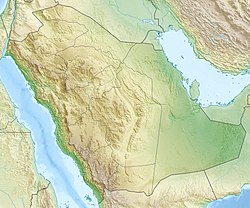

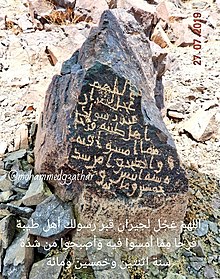






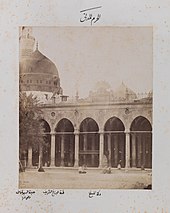
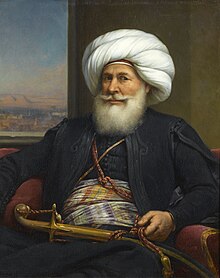


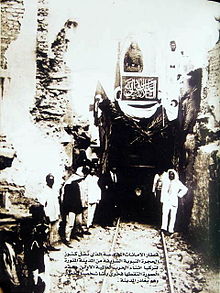



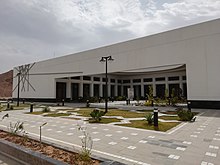


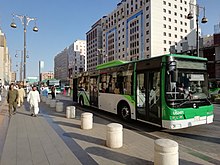
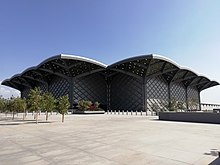







একটি মন্তব্য পোস্ট করুন
ওয়েলফশন মানবকল্যাণ সংঘ যা বিশ্বের কল্যাণকামী মানুষের সম্মিলিত সংগঠন।
যার লক্ষ্য কল্যাণকামীদের একত্রিত করা,শিক্ষা অনুরাগী, কল্যাণ অনুরাগী, জ্ঞান অনুরাগী এবং কল্যাণের জন্য একতাবদ্ধ হতে আকাঙ্ক্ষীদের নিয়ে সততা ও ন্যায়নিষ্ঠার সাথে একতাবদ্ধ হয়ে মানবতার কল্যাণে কাজ করে, সুন্দর সমাজ গড়া। শিক্ষা সচেতনতার প্রচার করা। বিশ্বে শিক্ষা, সততা ও কল্যাণের প্রসার এবং উন্নয়নের মাধ্যমে মানুষের জীবন মানের উন্নয়ন ঘটানো ওয়েলফশনের প্রধান লক্ষ ।
Welfare,Education,Lead,Friend,Truth,Indagator,Organization,Necessary
WELFTION